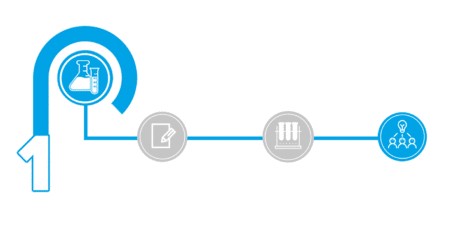
At this stage, we suggest creating a definition of your project that is as precise as possible; its usefulness or its added value, its strengths, and even its potential weaknesses.
Step A: Get your idea down on paper

What stage are you at? Do you have an idea that is already well-defined or is it still vague?
Regardless of your project’s state of maturity, it is useful to put your idea into writing. Before you conduct market research, the process of writing it down will force you to objectify your ideas and to move from an abstract state to a concrete state.
This objectification will be of use to you in the next step, when it comes to presenting your idea to your friends and family. This way, you can be sure that you deliver a consistent message and the answers you get from your friends and family will always be based on the same idea.
At this stage, a few lines (10 maximum) that summarise your idea will be sufficient – the type of customers you want to reach, the benefits to them and what makes your idea better than what is currently on offer.
Step B: Test your idea prior to doing market research
Don’t be afraid that someone will steal your idea. This is an irrational fear that will deprive you of valuable feedback.
On the contrary, in the earliest phase of your project, well before carrying out market research, we strongly encourage you to test your idea among your friends. What do they think? What are their positive and negative opinions? Ask them specifically what negative sides they see to it.
It is easy to fall in love with your own idea. Beware. This is where failures are born. When you become too convinced by it, you end up no longer being able to see the potential mistakes and pitfalls. We have heard too many entrepreneurs tell us that they were so familiar with their market that they did not need to conduct market research. Difficulties and setbacks soon reared their ugly heads.
Step C: Hold a Design Thinking session
After gathering the opinions of your friends in an informal manner, it is time to move to a more concrete phase. Holding a working session will allow you to structure your ideas and lay the foundations of what your product or service will really be like.
Before performing market research, we encourage you to use the Design Thinking method to hone your ideas and, after one or two days of intensive work, achieve a precise definition of the product, the expected points of differentiation, the design, …
Question the participants in order to understand how they use your product or how your service is useful to them. Also identify their points of dissatisfaction to then create different prototypes.
Read our next article about the stages of market research
Once your project has been well defined, an initial synthesis is required. In our next article about the stages of market research, we will offer you more tips to follow before turning your idea into a prototype.



